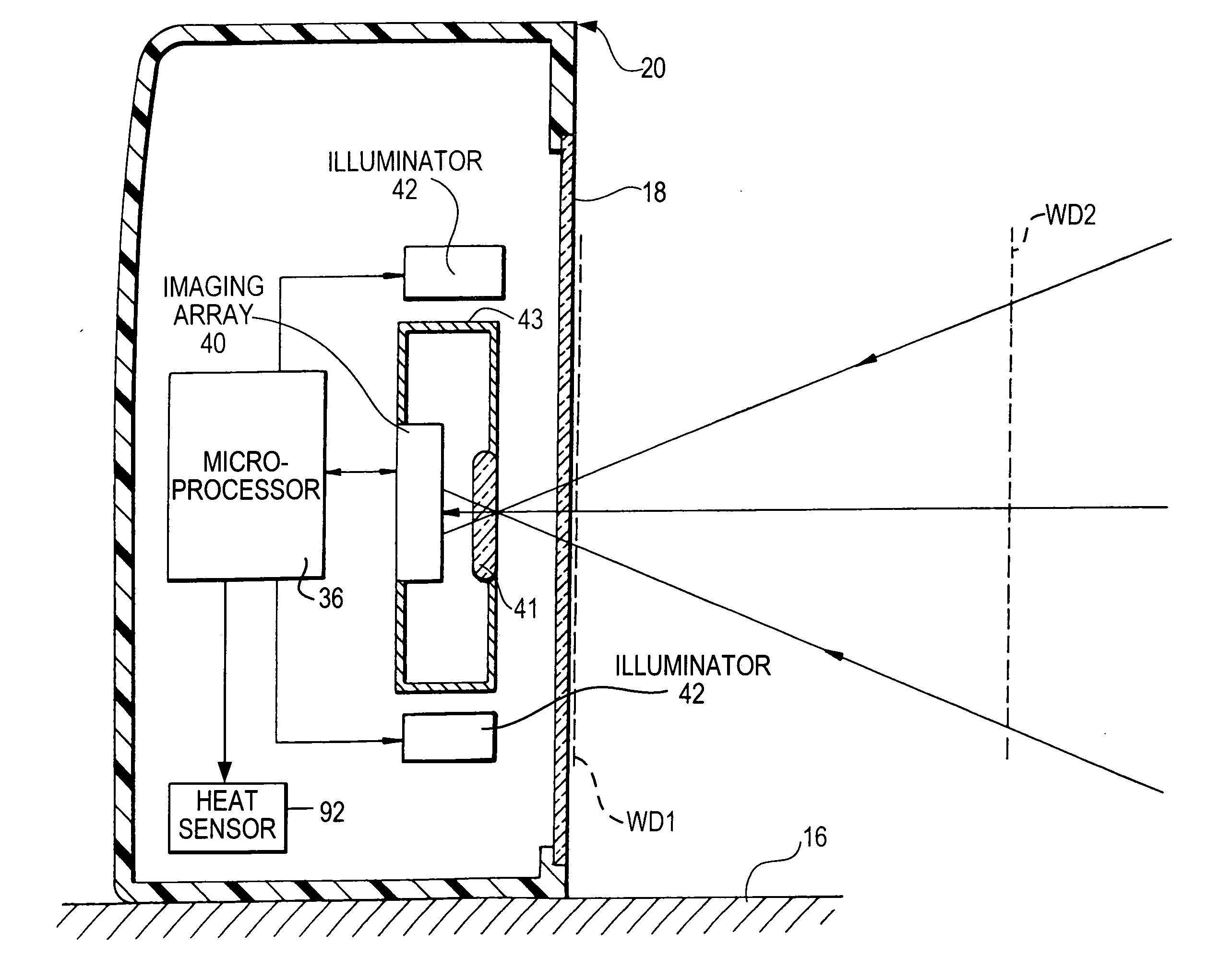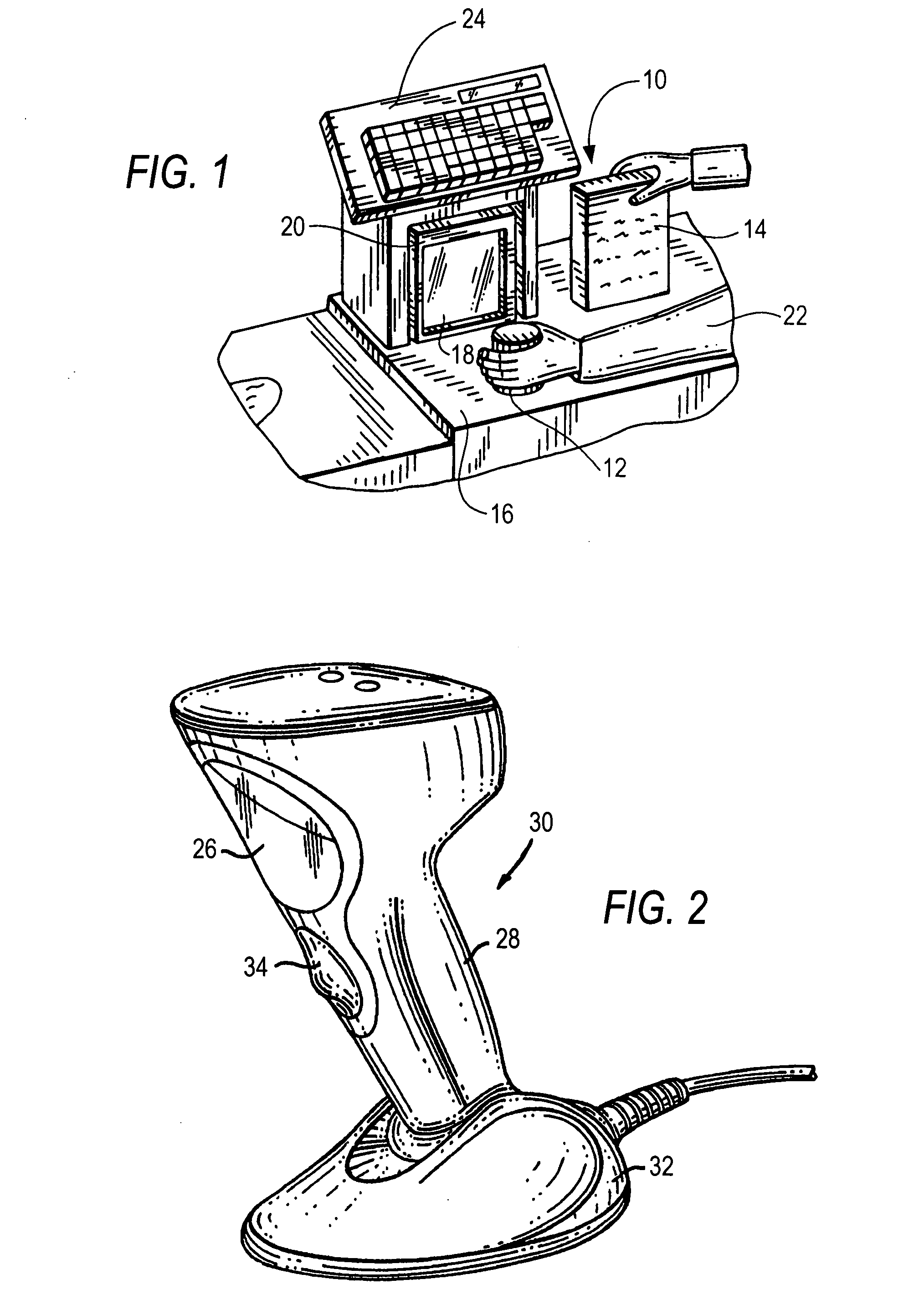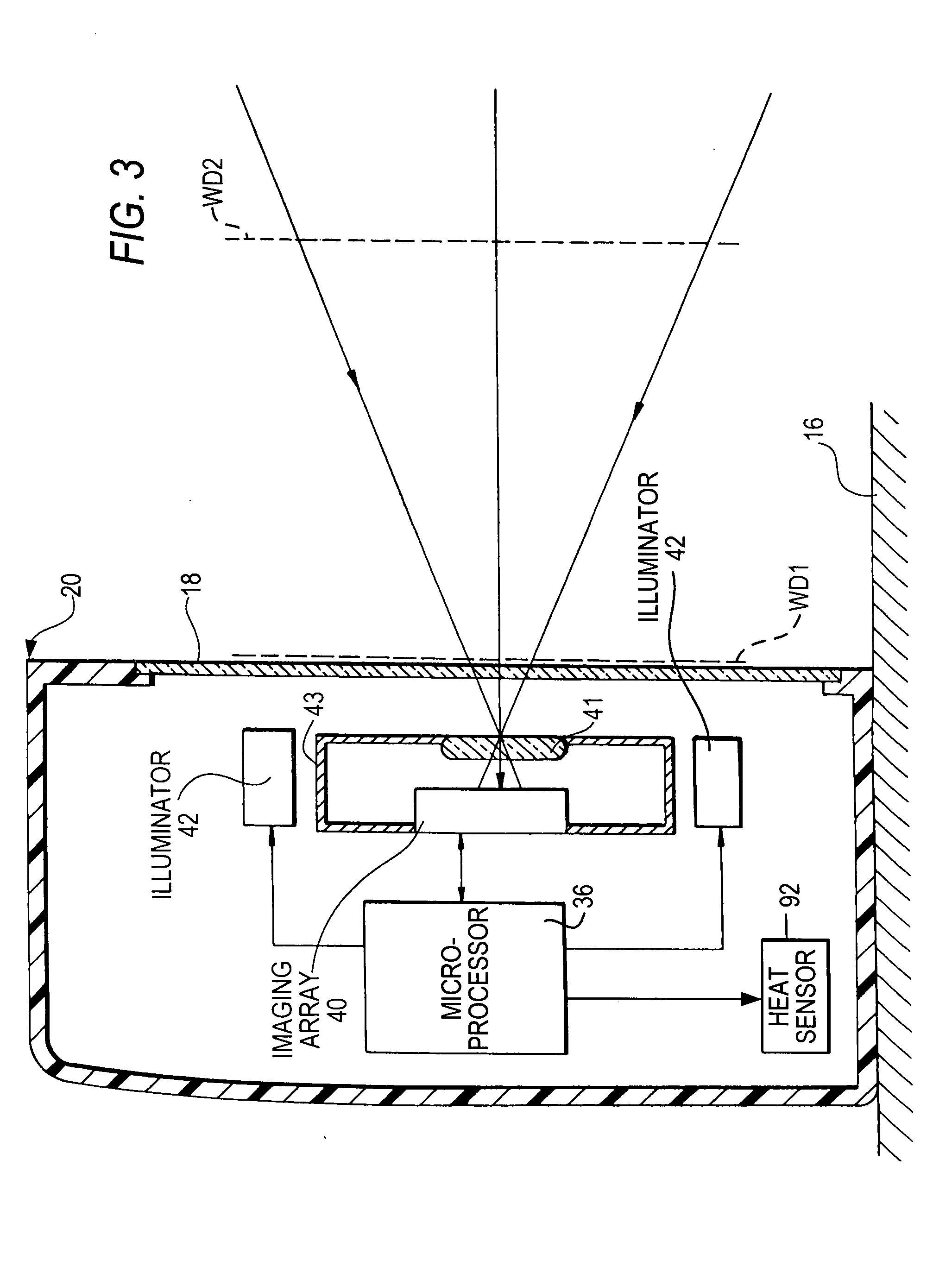Thermal management in imaging reader
a technology of thermal management and imaging reader, which is applied in the direction of sensing record carrier, dynamo-electric converter control, instruments, etc., can solve the problems of significant heat generation, degrade the performance of the imager itself, and reduce the operating lifetime of the leds and other reader components, so as to improve the performance of the reader, dissipate the excess heat, and improve the effect of reading performan
- Summary
- Abstract
- Description
- Claims
- Application Information
AI Technical Summary
Benefits of technology
Problems solved by technology
Method used
Image
Examples
Embodiment Construction
[0036]Reference numeral 10 in FIG. 1 generally identifies a workstation for processing transactions and specifically a checkout counter at a retail site at which products, such as a can 12 or a box 14, each bearing a target symbol, are processed for purchase. The counter includes a countertop 16 across which the products are slid at a swipe speed past a generally vertical window (i.e., presentation area) 18 of a box-shaped, portable, vertical slot, imaging reader 20 mounted on the countertop 16. A checkout clerk or operator 22 is located at one side of the countertop, and the reader 20 is located at the opposite side. A cash / credit register 24 is located within easy reach of the operator. In the frequent event that large, heavy, or bulky products, that cannot easily be brought to the reader 20, have target symbols that are required to be read, then the operator 22 may also manually grasp the portable reader 20 and lift it off, and remove it from, the countertop 16 for reading the ta...
PUM
 Login to View More
Login to View More Abstract
Description
Claims
Application Information
 Login to View More
Login to View More - R&D
- Intellectual Property
- Life Sciences
- Materials
- Tech Scout
- Unparalleled Data Quality
- Higher Quality Content
- 60% Fewer Hallucinations
Browse by: Latest US Patents, China's latest patents, Technical Efficacy Thesaurus, Application Domain, Technology Topic, Popular Technical Reports.
© 2025 PatSnap. All rights reserved.Legal|Privacy policy|Modern Slavery Act Transparency Statement|Sitemap|About US| Contact US: help@patsnap.com



